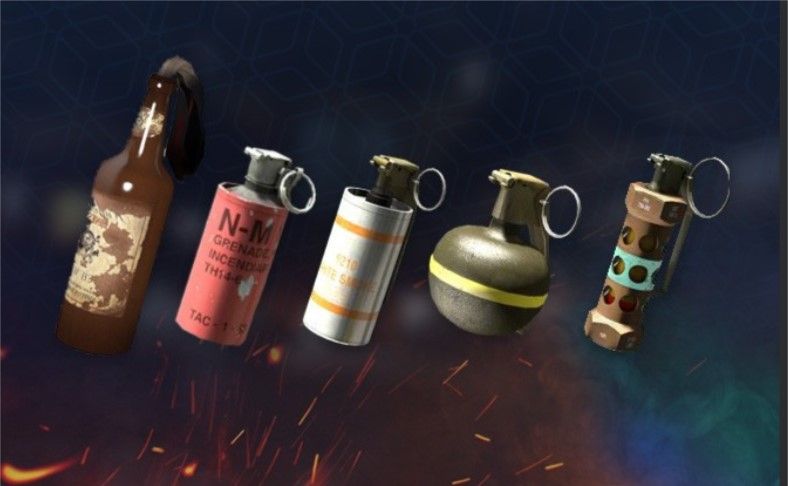CamiForm: Your Source for Diverse Insights
Exploring a world of information across various topics.
Explosive Insights for CS2: Grenade Tips That Blow Minds
Discover mind-blowing grenade tips for CS2 that will elevate your gameplay and leave your opponents in awe. Unlock your explosive potential now!
Top 5 Grenade Techniques to Dominate in CS2
In Counter-Strike 2 (CS2), mastering grenade techniques can give you a significant edge over your opponents. Here are the Top 5 Grenade Techniques you need to dominate the game:
- Smoke Grenades: Use these to block enemy vision and create a tactical advantage. Knowing the right spots for smoke can help you cover bomb plants or cuts off angles from snipers.
- Flashbangs: Timing is key with flashbangs. Throw them before pushing into a site to disorient enemies and gain the upper hand in engagements.
- HE Grenades: These can deal significant damage when thrown into tight spaces where enemies are clustered. Learning common enemy positions will maximize their effectiveness.
- Molotov Cocktails: Perfect for area denial, use these to flush out enemies hiding in corners or to block certain paths.
- Decoy Grenades: While often overlooked, decoys can serve as a distraction, allowing you to set up ambushes or fake bomb plans.

Counter-Strike is a team-based first-person shooter that has captured the hearts of gamers worldwide. One of the most popular maps in the game is Inferno, known for its intricate layout and tactical depth. For players looking to improve their gameplay, understanding inferno callouts can greatly enhance their team communication and strategy. With its blend of skill, teamwork, and strategy, Counter-Strike remains a staple in the esports community.
Understanding Grenade Physics: How to Maximize Your Throw
Understanding grenade physics is crucial for maximizing your throw distance and accuracy. Several factors come into play when throwing a grenade, including the angle of release, throw strength, and the grenade's design. The optimal angle for most thrown projectiles, including grenades, is typically around 45 degrees. By releasing the grenade at this angle, you can achieve the maximum distance and ensure that it reaches the intended target effectively.
Another important aspect is the spin and aerodynamics of the grenade. A well-thrown grenade should have a stable and controlled spin to maintain its trajectory. To improve your throw technique, consider practicing with weighted objects to enhance your arm strength and coordination. Additionally, utilizing the following tips can help increase your effectiveness:
- Practice regularly to develop muscle memory.
- Focus on your grip and hand positioning.
- Adjust your throw based on environmental factors like wind.
The Ultimate Guide to Grenade Types: When and Where to Use Them
When it comes to tactical operations, understanding the different grenade types available is crucial for effective combat strategy. Grenades are categorized into several types, including fragmentation, smoke, stun, and incendiary grenades. Each serves a specific purpose on the battlefield. For instance, fragmentation grenades are designed to disperse shrapnel, making them ideal for disabling enemy personnel in a confined space, while smoke grenades can provide cover for troop movements or mark targets. Recognizing the right situation to deploy each type can significantly impact mission success.
In practical terms, the use of grenade types can vary based on the operational context. For example, during an urban warfare scenario, a stun grenade, or flashbang, is often utilized to disorient enemies and reduce the risk of collateral damage. In contrast, a combat environment with fortified positions might necessitate the use of fragmentation grenades to breach defenses. It's essential to be well-versed in the tactical applications of each grenade type to maximize their effectiveness and ensure that they are used responsibly and strategically.